The 17th Amendment to the United States Constitution—ratified in 1913—begins as follows:
“The Senate of the United States shall be composed of two Senators from each state, elected by the people thereof, for six years; and each Senator shall have one vote. The electors in each state shall have the qualifications requisite for electors of the most numerous branch of the state legislatures.” ~ 17th Amendment of the U.S. Constitution
This was an amendment of the original design of the U.S. Senate laid out in Article I Section III of the Constitution as written by the Founders:
“The Senate of the United States shall be composed of two Senators from each state, chosen by the legislature thereof, for six years; and each Senator shall have one vote.” ~ Article I Section III of the U.S. Constitution
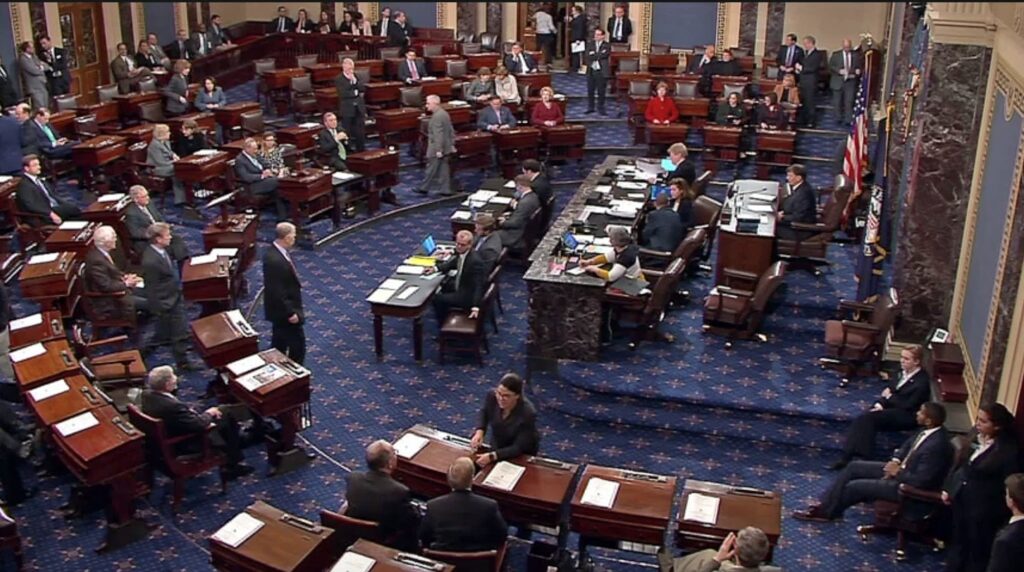
While the change might have seemed well-intended at the time, the 17th Amendment has been described as “one of the worst modifications to the U.S. Constitution.” Since its passage, the impact has been disastrous and keeps getting worse.
It seems counterintuitive. After all, “Why would anyone not want to vote directly for their own U.S. Senators?”
That is certainly a fair question and one we hope to answer in this article—because it requires much thought and understanding of constitutional design.
The History
The Founders wanted the power and control of government to rest with “We The People.” This is reflected in how they structured Congress as spelled out in Article I. The House of Representatives was to be known as the “People’s House”—with representatives elected by the people from congressional districts and only officials directly elected within the federal government under the original design.
The U.S. Senate was meant to be the voice of The States in Congress, but more specifically—the state legislatures. Under the original design, state legislatures were meant to be the most consequential institutions and hold the real power in the entire government structure. This, for example, is why the Founders gave ultimate power for selecting presidential electors to state legislatures. Not the state governors, courts, or popular vote—the state legislatures.
Why is that?
State legislatures are the institutions closest to the people. State legislators, for the most part, live in the communities they represent. They interact with their constituents on a daily basis at work, at the store, in church, etc. So if they are not being responsive to the concerns of those they represent, they’re going to hear about it. If they are unwilling to carry out the people’s wishes, it is far easier to unseat a state legislator than any other constitutional office.
The Founders believed government, by its very nature, is corrupt. However, state legislatures are considered the least corrupt institution when viewed as a whole. Nearly 7,400 state legislative seats are spread out across the country and constantly turning over. A “George Soros-type” figure can’t co-opt enough of them to push through any agenda nationwide effectively.
That helps explain why the Democrats had to go to extraordinary lengths to bypass state legislatures in the lead-up to the 2020 election and throughout the election contest period. They wouldn’t have been able to get away with the steal otherwise.
By pushing ultimate power down to state legislatures, the Founders understood it was the most effective means to keep control in the hands of the people within a representative government.

Remember, we are the United States of America, and that is where the real power is supposed to reside. The federal government itself was not intended to have much power at all. As stated by James Madison in Federalist [Paper] No. 45:
“The powers delegated by the proposed Constitution to the federal government are few and defined. Those which are to remain in the State governments are numerous and indefinite. The former will be exercised principally on external objects, as war, peace, negotiation, and foreign commerce” ~ James Madison—Federalist No. 45
The U.S. Senate was how state legislatures would oversee and direct the federal government. Both chambers of each state legislature (only Nebraska has a single chamber) were meant to appoint a Senator to represent its interests in the Senate; hence the reason each state is given two.
This is why the Senate is given the power to approve presidential appointments and ratify treaties negotiated by the Executive. It was supposed to be the means by which Senators—under the direction of the state legislature they represent—would “advise and consent” to the executive branch’s actions and keep it from acting against the will of the States at large.
The 17th Amendment was passed in the wake of political scandals of the late 19th and early 20th centuries. Political machines—such as Tammany Hall in New York—had amassed a great deal of power at the state and local levels. And the process for appointing U.S. Senators was viewed as having become too corrupt. The thought was the only way to remedy this was to cut state legislatures out of the process and go to the direct election model we now have today.

Coincidentally, this was around the same time—and for many of the same reasons—Civil Service Reform was first enacted in the federal government to replace the old “Spoils System.” This would have equally disastrous effects and lead to the rise of the Administrative State—a government comprised of mostly unelected, career bureaucrats that are next to impossible to fire for nearly any reason.

Likewise—since the passage of the 17th Amendment—the U.S. Senate has become far more corrupt—with references in pop culture as far back as anyone can remember using the term “senator” synonymously with “corruption.”
Never badder than bad ’cause the brother is madder than mad
At the fact it’s corrupt like a senator
Soul on a roll, but you treat it like soap on a rope
‘Cause the beats and the lines are so dope
~ Public Enemy – ‘Bring the Noise’
So how did things get this bad? Well, if you understand the inherent flaws in the 17th Amendment, you would have understood this was the inevitable result.
The Electoral College
It helps to understand the purpose and design of the Electoral College because it helps explain why the 17th Amendment was such a bad idea. The concepts are very analogous.
Democrats love to rile against the unfairness of the Electoral College, but do you ever notice they never say anything about the U.S. Senate? Intuitively—if their position about Electoral College was based on principle—they should be apoplectic about the structure of the Senate.
Take, for example, Alaska and Wyoming, two ruby-red states, combined they have only 11% of deep blue California’s representation in the Electoral College. Yet, despite both only having a tiny fraction of California’s population—slightly more than 3% combined—they collectively have twice California’s voting power in the Senate.

But you never hear a peep out of the Left about this disparity. Why is that?
Some Leftist academic types and Hollywood shills would have you believe the Founders put in the Electoral College as some kind of safeguard. It’s supposed to be one final tool for the political elite to overrule the will of the general population and stop a duly-elected President from taking office if The Swamp really disliked them.
It is a complete myth. I know … shocking the geniuses in Hollywood wouldn’t understand that.
It’s not a coincidence the Electoral College has the same basic structure as Congress—with each state getting one vote equal to its number of Senators and House Representatives. The Founders—most notably Thomas Jefferson—understood that a country’s large urban centers would always have a dramatic population advantage over the rest of the country. And those cities would be dominated by liberal, professional-class politics.

The inevitable result of large cities imposing their detached “Let them eat cake” political will on the rest of the country would be the same discontentment that led to the American and French Revolutions. It was true then, and it is true today.

If Democrats got their wish—and eliminated the Electoral College in favor of the popular vote—four major urban centers (New York City, Los Angeles, Chicago, and Houston) would effectively decide every presidential election contest. They could install their authoritarian head of state to rule over all of us working-class plebes in “flyover country.” And there’s nothing we could do to stop it because we would never be able to overcome their population advantage. A few liberal enclaves would have free rein to run roughshod over the entire rest of the country.

The Founders had the foresight to put in a system of Proportional Representation for electing the President and representation in Congress to more evenly divide power between the large urban areas and the more rural heartland.
17th Amendment’s Fatal Flaw
Removing the Electoral College would have a terrible impact on presidential elections. Unfortunately, the 17th Amendment has already had that same impact on U.S. Senate races—only at the state level. It removed proportional representation from the process and shifted it to a straight popular vote. End result? The liberal, professional-class urban centers largely determine who is elected a state’s U.S. Senators. The majority of the geographic areas within the state now get very little say, if any at all.
During the 2020 presidential election contests, many were surprised to realize that all the state legislatures in the key swing states were in the hands of the Republicans. How is that?
It’s because state legislatures largely have the same proportional representation design as the U.S. Congress.
If you talk to anyone from Michigan—they’ll be the first ones to tell you—Michigan is not overall a liberal state by any stretch of the imagination. Throughout most recent history, the Michigan state legislature has been in the hands of the Republicans. Yet Michigan has only been represented by a Republican in the U.S. Senate for three brief stints since 1950.
Why is that? Because Detroit elects its U.S. Senators. The whole rest of the state can take a hike. Nobody cares what you have to say.

Pennsylvania is a massive state and is deeply red in most areas. Its state senate has been under Republican control since 1994, and its General Assembly just flipped back to Democrat control for the first time since 2011.

So how did nearly brain-dead John Fetterman end up representing Pennsylvania in the Senate? Because Philadelphia and Pittsburgh/Allegheny County elect Pennsylvania’s Senators. The entire rest of the state can get bent.

Ever wonder how a state as conservative as Georgia wound up represented by two borderline communists in the Senate?

It’s because Georgia doesn’t elect its U.S. Senators; Atlanta/Fulton County does.
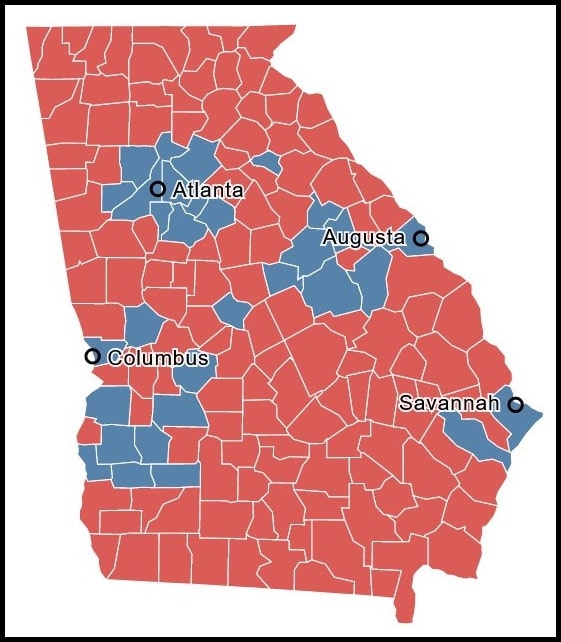
Even state legislative houses—such as the New York State Senate—are sometimes in the hands of the Republicans because of proportional representation. But only New York City gets to say who represents New York in the U.S. Senate, and the rest of the state can suck a doorknob.
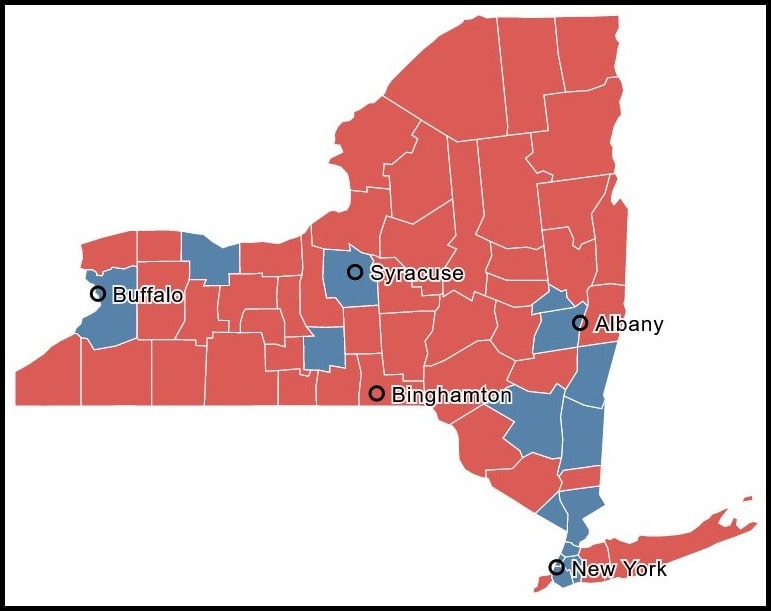
The rural, working-class areas of the country now have very little representation in the U.S. Senate. And keep in mind, that was the entire reason the Senate was created in the first place. To give all regions of the country one place—within the ‘checks & balances’ of the federal government—where they had equal weight regardless of population. The 17th Amendment eviscerated it.
Without the 17th Amendment, the GOP would have 59 seats in the Senate—10 more than they currently hold. They would have averaged 14 more seats from the start of the last decade and always be in the majority. For most of that time, they would have held a filibuster-proof majority. And at specific points, they would have held a two-thirds, veto-proof majority—which also happens to be the threshold needed to convict and remove an impeached President from office.

That’s right. For the first two years of the Biden administration, the Republicans would have only been four votes shy of being able to remove him from office. How do you think that might’ve impacted the 2022 midterm elections?
Are you starting to understand why the Democrats never complain about the structure of the U.S. Senate?
But it goes beyond that. Under the method used since the 17th Amendment was passed, even the Republicans who are elected tend to be professional-class, Establishment types due to the urban bias. We can see with our own eyes that only a handful of Senators in the entire GOP caucus seem to represent the best interests of the Republican base.
Additionally, one of the worst effects of the 17th Amendment is that it removed state legislatures’ right to recall Senators. Once elected, you’re stuck with them for six years, no matter how badly they betray their constituents once in office. Senators now only need to go through a cycle of acting by the wishes of their constituents leading up to their reelection, come back to their state once every six years to campaign for a short period of time, and get reelected based on the power of their political machines.
They have become life-tenured Washington D.C. residents with little connection to the states they represent. They live and work in the Swamp, and that’s who they represent.
Under the original design, Senators were held far more accountable. Citizens could put pressure on their local state legislators if they were unhappy with the actions of their Senator. And if needed, voters could flip the chamber in their state legislature and have them recalled.
It was already trending upwards, but the average term for a U.S. Senator before the 20th Century and the passage of the 17th Amendment was about four years. The average term of a Senator today is measured in decades.
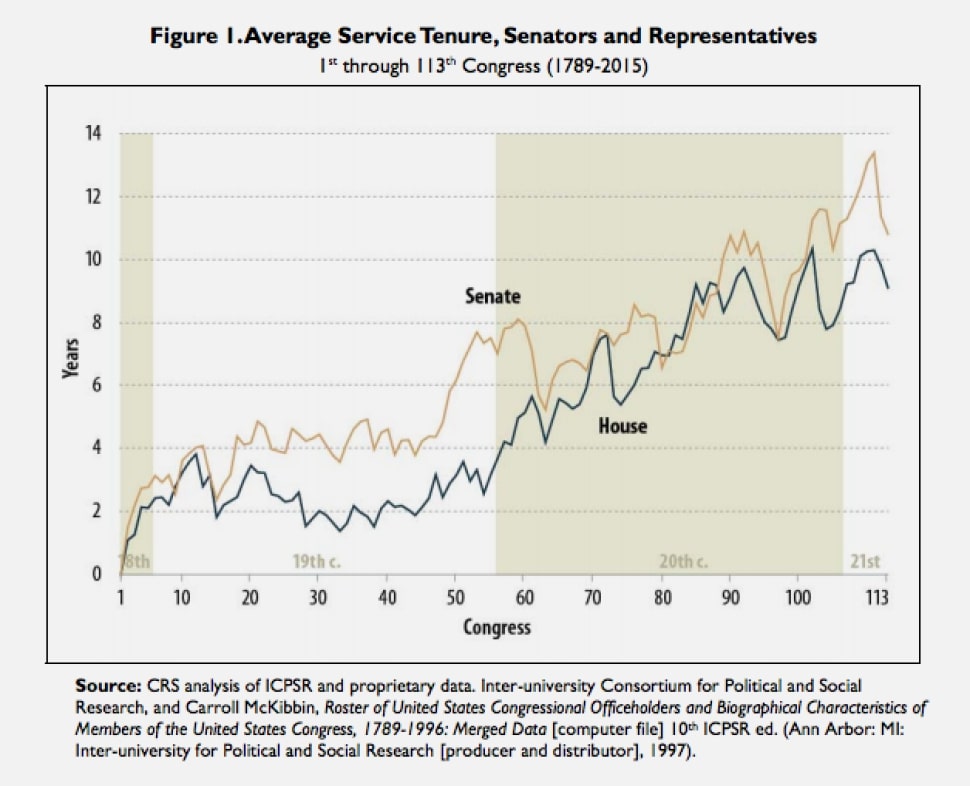
There was an ongoing process of accountability for sitting members of the Senate. Now we only get a shot at accountability once every six years with the deck stacked against us.
“It has removed much of the impetus for voters to change politics at the local level, instead federalizing even more power in Washington D.C.” ∼Quote from The Burning Platform article ‘Fix The Senate The Right Way— Repeal The 17th Amendment’
We would not have situations like Sen. Mitt Romney (R-UT), who was a dead man walking politically in the Republican Party with another 5.5 years left on his term in office. Or Sen. John Cornyn (R-TX), who wins reelection and then signs onto gun-grabbing legislation knowing he will not have to face the wrath of the voters for another half decade—assuming they even remember by that point.
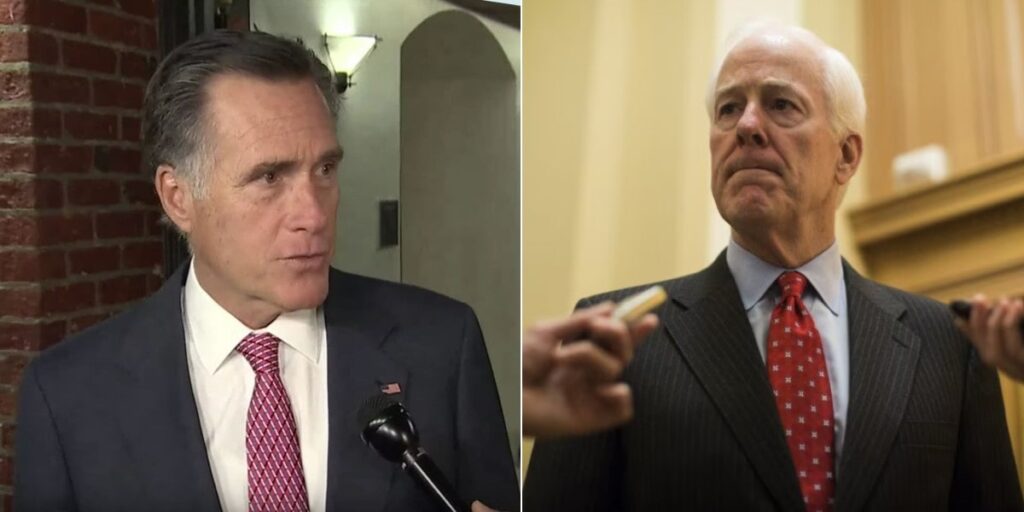
Under the original design of the Constitution, Romney and Cornyn would have been recalled by their state legislatures and been out of office the next day. Not only would we have many more Republicans in the Senate, but they would be much better Republicans who were constantly being held accountable. There would be many more Ron Johnson’s (R-WI) exposing the COVID “vaccine” fraud and a lot fewer war-whores like Lindsey Graham (R-SC) pushing us into World War III.
Unfortunately, repealing the 17th Amendment would require its own constitutional Amendment. And given the typical amendment process requires a two-thirds vote of the Senate, it is doubtful that many Senators will vote to put themselves out of office. A Convention of States (CoS) is the only realistic way it could happen. If a CoS were to happen, repealing the 17th Amendment and returning to the original design should be a key item on the agenda.
This isn’t a radical idea. After all, this is how the Founders originally designed it. And once again have proved—they knew what they were doing.

Follow me on Truth Social @AdamCarter












